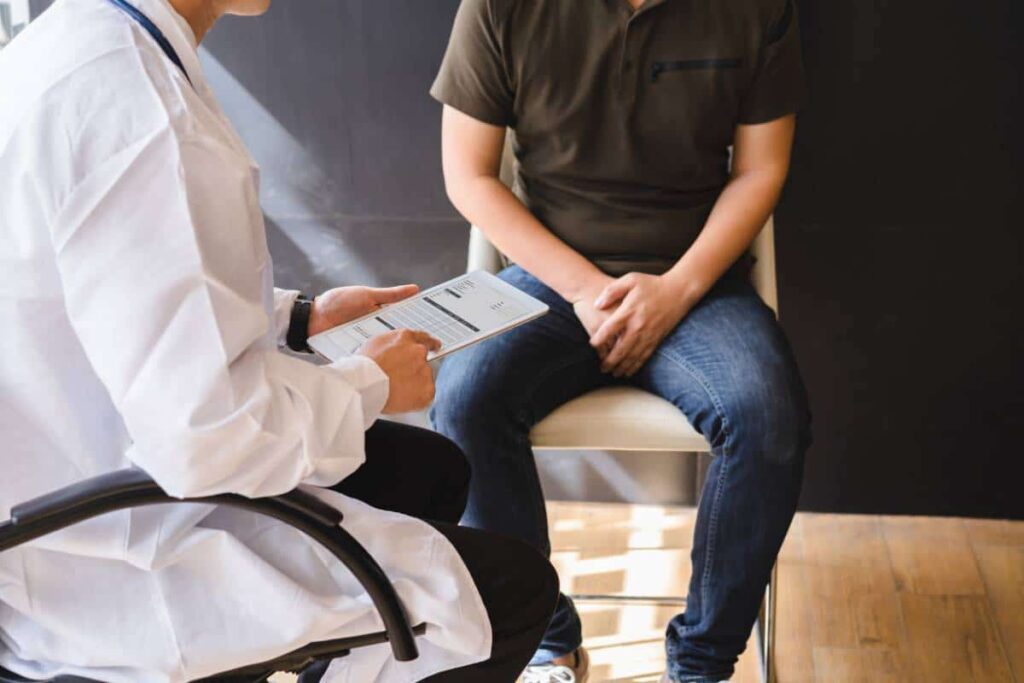Urology is the study and medical practice of diseases and abnormalities of the urinary system, the external genitalia (reproductive and surface organs), the prostate, and the male reproductive system. For the needs of this field, there are different types of examinations that can be carried out with the aim of detecting the affections of the urinary and testicular organs.
Summary
Why do a urodynamic assessment at the urologist?
The urodynamic assessment is an examination which makes it possible toassess muscle function and the state of the bladder. It is usually performed by a urologist, a practitioner specializing in conditions of the urinary system and can be performed on a patient for several reasons. A urodynamic assessment is first essential when the patient has urinary difficulties. These may be related to bladder problems or poor function of the muscles connected to the organ (the external pubic muscle and the bladder sphincter).
This assessment is also necessary when other urological examinations have not made it possible to make an effective diagnosis in patients with certain disorders, before an operation or when a treatment fails. In women, this is often recommended in cases ofcomplex urinary incontinence. The urodynamic assessment is a rather complex and sometimes unpleasant (according to some patients), but painless examination. For everything to go smoothly, it is important that it is carried out by an experienced professional urologist.


You can call a independent professional if you need a private urologist in Montreal to benefit from fast service and personalized support.
How is a urodynamic assessment carried out?
The exam takes place in two stages. During the first stage, it is necessary to go to the clinic to take a blood test and perform a urogenital smear. This allows for an accurate diagnosis. In most cases, a patient can benefit from support throughout the process. For example, you can benefit from a personalized follow-up with a doctor who will accompany you.
The second step takes place with a urologist who will receive you for the examination of the urodynamic assessment. These exams can be very painful and in some cases you may need consult a trauma specialist. It is therefore useful for you to be accompanied. The tests carried out for a complete urodynamic assessment are based on measurements carried out by means of a catheter and a special device. It is :
- the flow rate,
- cystometry,
- urethral profilometry.
The first test is to analyze urine volume and jet power. The second aims to analyze the pressure in the bladder which fills with a probe and the last test helps to analyze the sphincter.
Transrectal ultrasound of the prostate
To eliminate the causes of impotence, a urologist may also offer to perform a transrectal ultrasound examination of the prostate. This examination is painless and doesn’t take much time. It provides precise information on the prostate and its relationship with the rectum. During this examination, it is possible to measure the size of the prostate, its volume and its shape as well as its texture.
To perform this examination, you must lie on your stomach. The doctor will then introduce a probe that he slides into the rectum. Ultrasound can visualize internal structures of the prostate and the blood vessels it contains. This helps rule out or confirm possible causes of your impotence. If it is related to prostate cancer, you may be offered surgery.
See a urologist for a cystoscopy
The cystoscope is a small device that allows you to view the inside of the bladder and the prostate. With this device, the urologist can perform a cystoscopy, one of the most common examinations in urology. This is indicated in case of presence of blood in the urine (haematuria), urinary disorders (irrepressible urges) or repeated infections. The examination is also useful for detecting or monitoring bladder cancer. Performed under local anesthesia, cystoscopy consists of examining the urethra and the bladder.
This examination is rather simple and painless. In men, the practitioner will introduce a small camera tube into the bladder and urethra to better see the internal and external walls of the organs after checking that there is no urinary tract infection through a urine analysis performed a few days before. In some cases it may take a tissue sample for a biopsy. This exam lasts between 5 and 10 minutes only and you will be able to go home as soon as it is finished.
Read also : Incontinence our practical advice




